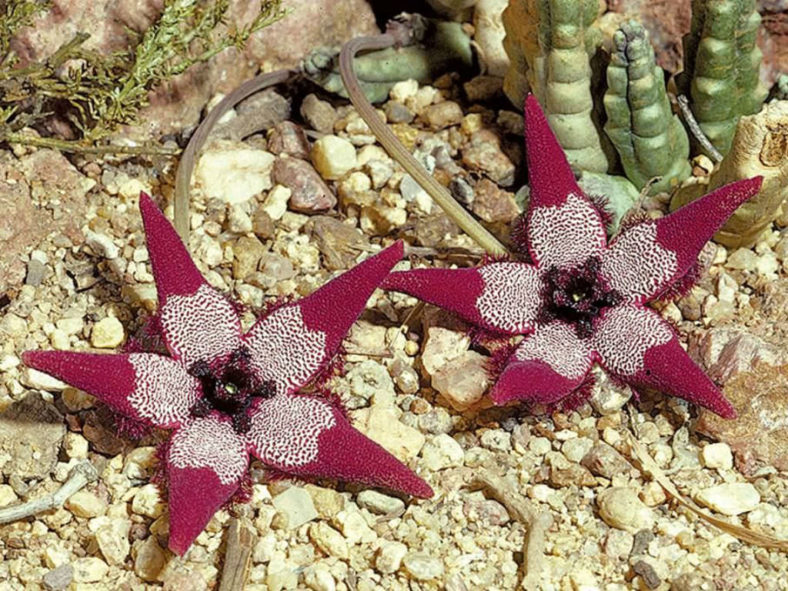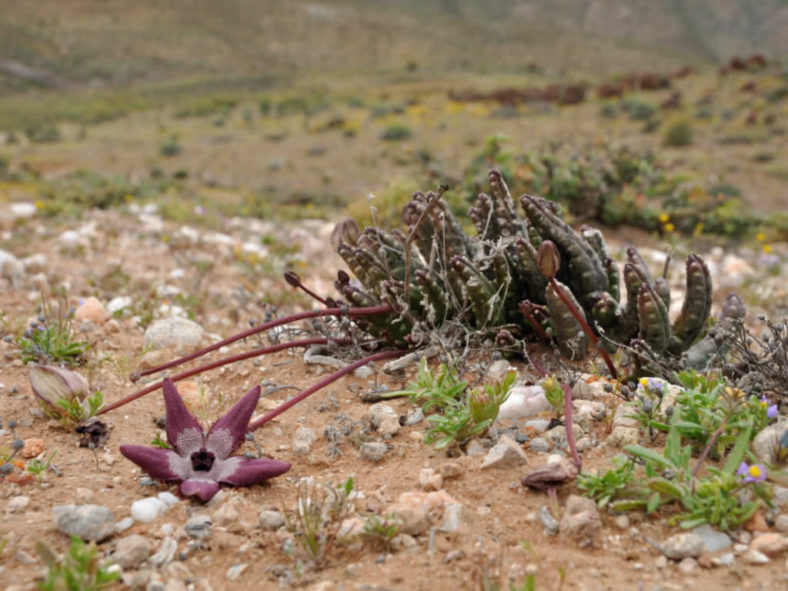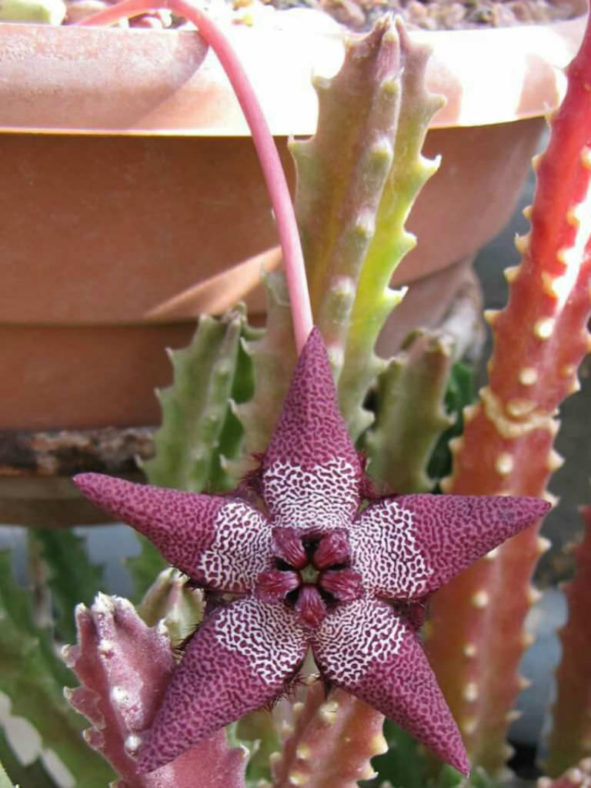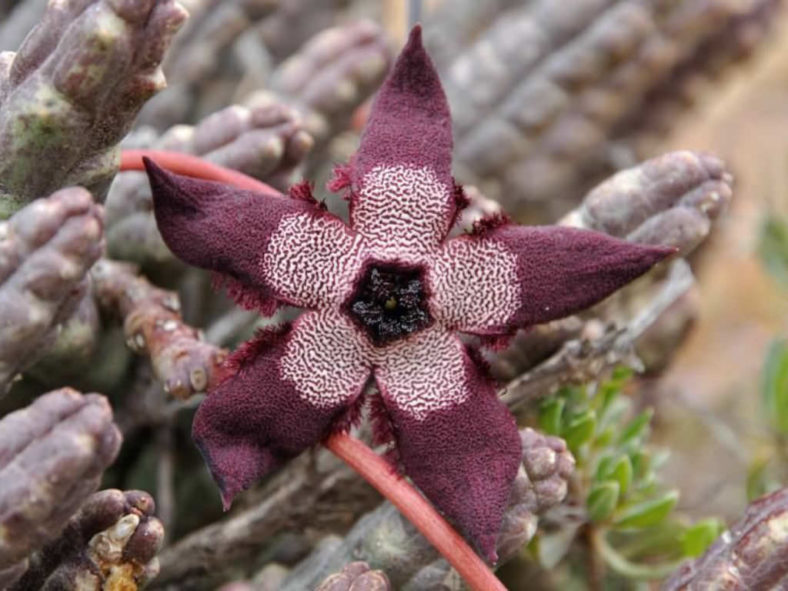Scientific Name
Tridentea longipes (C.A. Lückh.) L.C. Leach
Synonym(s)
Stapelia longipes, Tromotriche longipes, Ceropegia penduliflora subsp. longipes
Scientific Classification
Family: Apocynaceae
Subfamily: Asclepiadoideae
Genus: Tridentea
Origin
Tridentea longipes is native to South Africa (Richtersveld National Park).
Description
Tridentea longipes is a clump-forming succulent with short, erect, glabrous, 4-angled, dull green stems, usually with a purplish tinge near the tips. The stems can grow up to 4 inches (10 cm) tall.
The beautiful star-shaped flowers appear in minute inflorescences, and each stem bears only one inflorescence from the stem base.

Hardiness
USDA hardiness zone 9a to 11b: from 25 °F (−3.9 °C) to 50 °F (+10 °C).
How to Grow and Care
Stapeliads are relatively easy to grow. However, they should be treated as outdoor plants as they will easily rot indoors and cannot flower without exposure to outdoor temperature fluctuations. They should be grown under cover so that watering can be controlled. Stapeliads require a reasonable amount of sunlight to promote flowering and maintain a well-shaped plant. Very shady positions will produce very poor flowering.
These plants come from climates where they survive extremely high temperatures in the summer, so most growth is in spring and fall, with flowering in fall when the weather cools down. In the growing season, water it in moderation when needed, ensuring the soil is fairly dried out between waterings. Do not water between late fall and early spring.
The easiest and best way to propagate Stapeliads is by stem cuttings that can be taken virtually throughout the year. Seed is also a method of propagation.
See more at How to Grow and Care for Stapeliads.
Links
- Back to genus Tridentea
- Succupedia: Browse succulents by Scientific Name, Common Name, Genus, Family, USDA Hardiness Zone, Origin, or cacti by Genus
Photo Gallery
Click on a photo to see a larger version.


